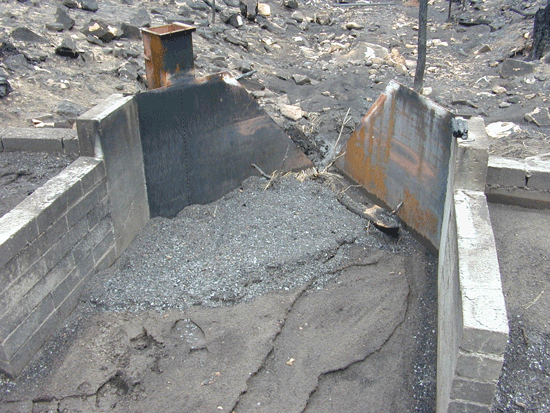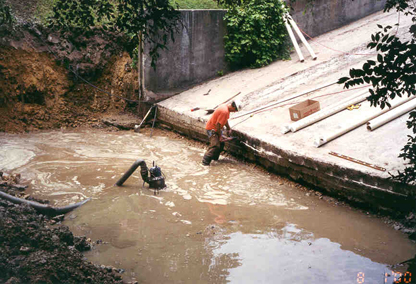
Researchers agree with the criteria that the length of the slab in direction of flow has an inverse relation to the uplift force. They determine the uplift force taking into account the length (L) and width (W) of the slab. A summary of the criteria can be found in references. The most recognized design criteria were based on stochastic analysis of the pressure and force fluctuations at the floor of the hydraulic jump in a physical model. Since the early 60s, design criteria for lining slabs to calculate the uplift force and equivalent thickness have been proposed. Equivalent thickness is the real slab thickness, and anchors are defense against uplift. Historical reporting of the failure of slabs in flumes and stilling basins, with an equivalent thickness ranging from 0.3 m to 4 m, has show the hydrodynamic uplift to be a structural design problem. The design of an energy dissipating structure need criteria to avoid cavitation, abrasion, internal erosion, hydrodynamic uplift, etc. An energy dissipator, such as a stilling basin, is used to retard the fast moving water by creating a hydraulic jump. Outlet works conduit typically requires dissipation of excess kinetic energy to prevent downstream channel erosion as this flow often discharges at a high velocity.

Palabras clave: Presiones de levantamiento, levantamiento hidrodinámico, losas, modelo físico, tanques de amortiguación, salto hidráulico.

Para considerar el mecanismo de falla inducido por el momento en el diseño de losas, objetivo del trabajo, se propone un criterio de diseño para el espesor equivalente de las losas con longitudes entre 6 y 12 veces la profundidad del flujo incidente y se compara con otros criterios. Se identificó desplazamiento del centro de presión respecto al centro de gravedad de la losa. La liberación controlada de los sellos y la variación en las dimensiones de las juntas y de la separación entre la cimentación y la losa, fueron realizadas para considerar sus efectos sobre la fuerza de levantamiento y los momentos. Keywords: Uplift pressure, hydrodynamics uplift, slabs, physical model, stilling basins, hydraulic jump.īuscando un criterio de diseño seguro y económico para las losas de los tanques de amortiguación, se calcularon fuerzas de levantamiento, centros de presión y momentos a partir de un análisis espacio-temporal de las presiones medidas encima y debajo de losas instrumentadas en un modelo físico. Design criterion to make the lining slab's thickness to length between 6 and 12 times the incident flow depth, is proposed, and this is compared to other design criteria. The objective of this work was to consider the failure mechanism induced by momentum in the slab's design.

An offset of the center of pressure from the slab's center of gravity was identified. Controlled release of the waterstops, and variation in the dimensions of expansion joints and in the gap between foundation and the lining slab were carried out in order to consider their effects on the magnitudes of uplift forces and momenta. As part of the search for safe and economic design criterion to line slabs of stilling basins, the present study is one of the first to calculate the center of pressure, uplift forces, and momenta from a spatiotemporal analysis of the pressures measured above and below instrumented slabs in a physical model.


 0 kommentar(er)
0 kommentar(er)
